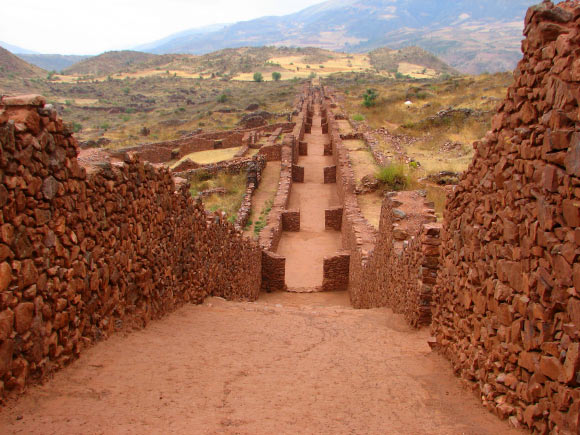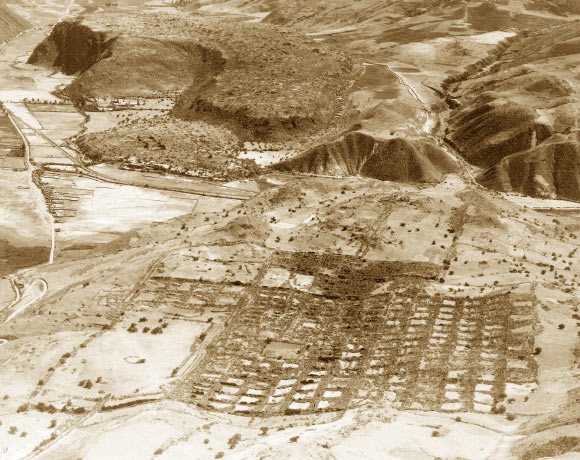New research led by archaeologists at Dartmouth College in Hanover, New Hampshire, is the first large-scale look at the settlement patterns and power of the Wari Empire, a complex pre-Columbian civilization.

Street in the Wari city of Pikillaqta, about 20 km east of Cusco, Peru. Image credit: Erick Again / CC BY-SA 3.0
The Wari and its better-known southern rival, the Tiwanaku Empire, were the precursors to the more famous Inca civilization.
Relatively little is known about the Wari, which flourished from about AD 600 – 1000. There are no historical documents and archaeologists are still debating their power and statecraft.
Many scientists think the Wari established strong centralized control – economic, political, cultural and military – like their Inca successors to govern the majority of the far-flung populations living across the central Andes.
But the new study, reported in published in the Journal of Anthropological Archaeology, suggests that while the Wari had significant administrative power, they did not successfully transition most colonies into directly ruled provinces.
“The identification of limited Wari state power encourages a focus on colonization practices rather than an interpretation of strong provincial rule,” explained lead author Prof Alan Covey.
“A colonization first interpretation of early Wari expansion encourages the reconsideration of motivations for expansion, shifting from military conquest and economic exploitation of subject populations to issues such as demographic relief and strategic expansion of trade routes or natural resource access.”

Aerial view of Pikillacta, facing toward the Cusco Basin. Image credit: Department of Library Services, American Museum of Natural History.
The results are based on a systematic inventory of archaeological surveys covering nearly 1,000 square miles and GIS analysis of more than 3,000 archaeological sites in and around Peru’s Cusco Valley.
The data indicate Wari power did not emanate continuously outward from Pikillacta, a key administrative center whose construction required a huge investment.
Instead, the locations of Wari ceramics indicate a more uneven, indirect and limited influence even at the height of their power than traditional interpretations from excavations at Wari sites.
______
Bibliographic information: R. Alan Covey et al. 2013. Regional perspectives on Wari state influence in Cusco, Peru (c. AD 600–1000). Journal of Anthropological Archaeology, vol. 32, no. 4, pp. 538–552; doi: 10.1016/j.jaa.2013.09.001







